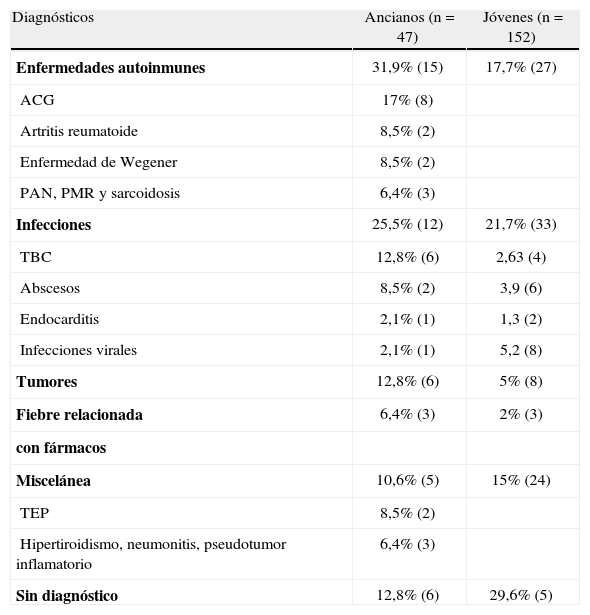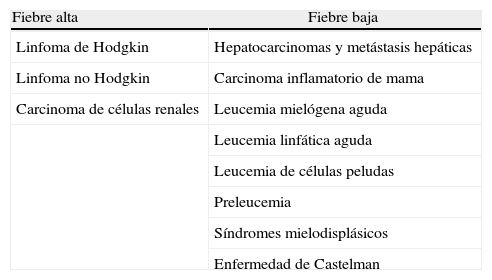El síndrome febril en la persona de edad avanzada respecto al adulto joven tiene una expresión clinica, una prevalencia de causas específicas y un abordaje diagnóstico, que requieren una evaluación diferencial. La importancia de este síndrome se incrementa, además, con el aumento de la edad de nuestra población, y debe ser considerada en estos pacientes siempre como un síntoma de alarma. En cuanto a la etiologia, la arteritis de células gigantes es la causa más frecuente de fiebre prolongada sin foco evidente, seguida –según ambiente epidemiológico– de la tuberculosis y de las neoplasias hematológicas. No hay consenso sobre el abordaje diagnóstico, pero es imprescindible considerar el principio de no maleficiencia, debido al mayor riesgo de complicaciones asociadas a las pruebas invasivas y a la menor tolerancia a éstas.
Fever in the elderly as compared with young adults has a clinical expression, prevalence, and diagnosis that require a specific type of evaluation. The significance of fever in the elderly gains importance with the increase of the population's age and it must be considered an alarm signal in these patients. Etiologically, the primary cause of prolonged fever with unspecific origin in this population, is arteritis of giant cells, followed by (according to epidemiological environment) tuberculosis and hematological neoplasias. There is no consensus on diagnostic approaches, but it is essential to take great care in the process due to risk associated with invasive tests and low tolerance to them.
Article
Diríjase desde aquí a la web de la >>>FESEMI<<< e inicie sesión mediante el formulario que se encuentra en la barra superior, pulsando sobre el candado.

Una vez autentificado, en la misma web de FESEMI, en el menú superior, elija la opción deseada.

>>>FESEMI<<<







